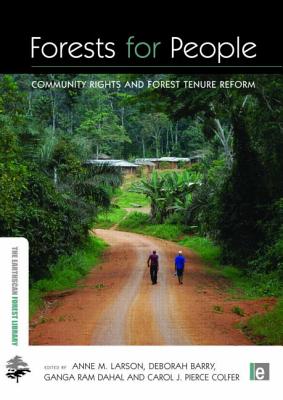Who has rights to forests and forest resources? This book assesses the experience of what appears to be an international trend that has substantially increased the share of the world's forests under community administration.
Who has rights to forests and forest resources? In recent years governments in the South have transferred at least 200 million hectares of forests to communities living in and around them. This book assesses the experience of what appears to be a new international trend that has substantially increased the share of the world''s forests under community administration. Based on research in over 30 communities in selected countries in Asia (India, Nepal, Philippines, Laos, Indonesia), Africa (Burkina Faso, Cameroon, Ghana) and Latin America (Bolivia, Brazil, Guatemala, Nicaragua), it examines the process and outcomes of granting new rights, assessing a variety of governance issues in implementation, access to forest products and markets and outcomes for people and forests.
Forest tenure reforms have been highly varied, ranging from the titling of indigenous territories to the granting of small land areas for forest regeneration or the right to a share in timber revenues. While in many cases these rights have been significant, new statutory rights do not automatically result in rights in practice, and a variety of institutional weaknesses and policy distortions have limited the impacts of change. Through the comparison of selected cases, the chapters explore the nature of forest reform, the extent and meaning of rights transferred or recognized, and the role of authority and citizens'' networks in forest governance. They also assess opportunities and obstacles associated with government regulations and markets for forest products and the effects across the cases on livelihoods, forest condition and equity.
Published with CIFOR.
Get Forests for People by at the best price and quality guranteed only at Werezi Africa largest book ecommerce store. The book was published by Taylor & Francis Ltd and it has pages. Enjoy Shopping Best Offers & Deals on books Online from Werezi - Receive at your doorstep - Fast Delivery - Secure mode of Payment
 Jacket, Women
Jacket, Women
 Woolend Jacket
Woolend Jacket
 Western denim
Western denim
 Mini Dresss
Mini Dresss
 Jacket, Women
Jacket, Women
 Woolend Jacket
Woolend Jacket
 Western denim
Western denim
 Mini Dresss
Mini Dresss
 Jacket, Women
Jacket, Women
 Woolend Jacket
Woolend Jacket
 Western denim
Western denim
 Mini Dresss
Mini Dresss
 Jacket, Women
Jacket, Women
 Woolend Jacket
Woolend Jacket
 Western denim
Western denim
 Mini Dresss
Mini Dresss
 Jacket, Women
Jacket, Women
 Woolend Jacket
Woolend Jacket
 Western denim
Western denim
 Mini Dresss
Mini Dresss






























































